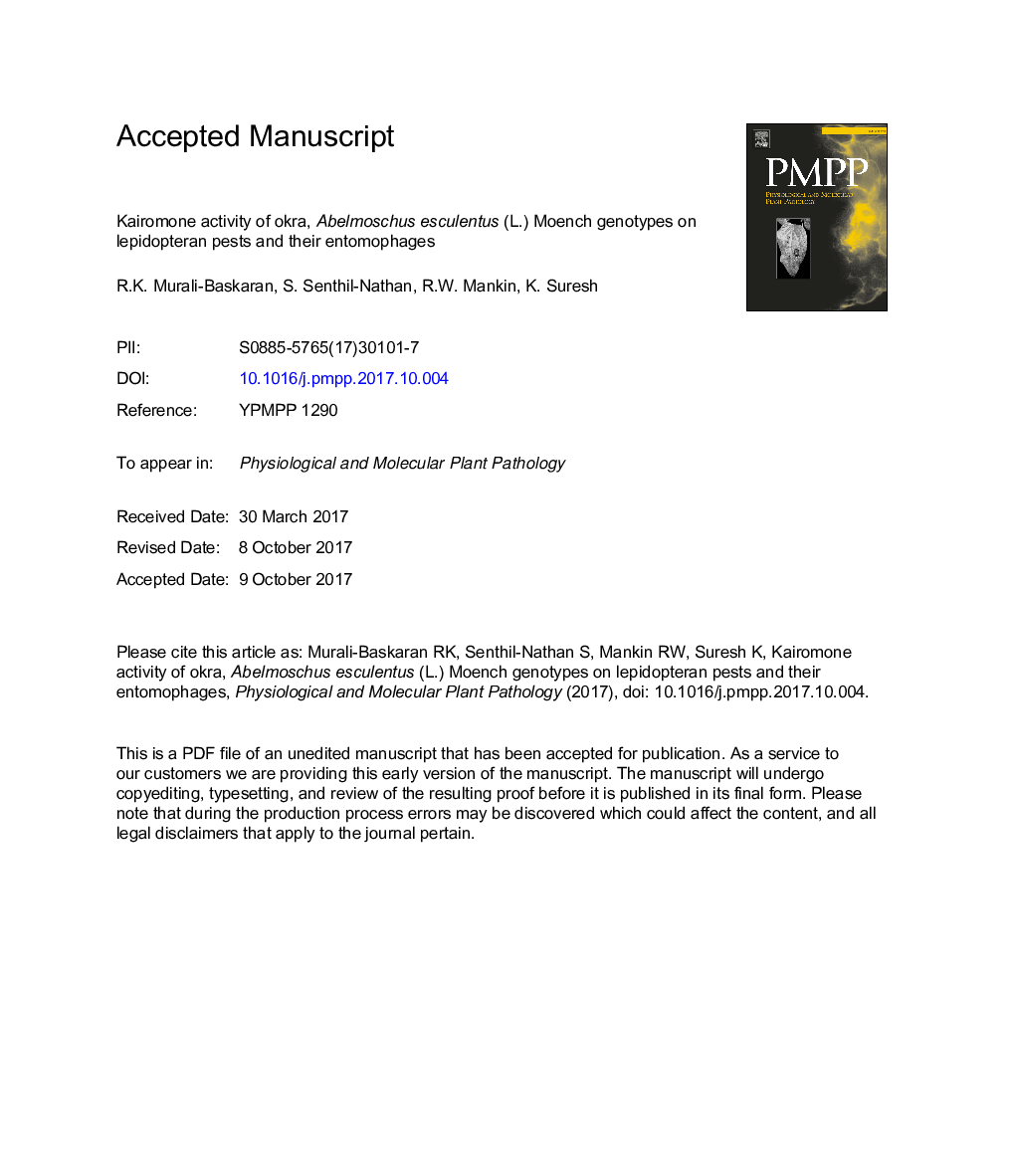| Article ID | Journal | Published Year | Pages | File Type |
|---|---|---|---|---|
| 8649265 | Physiological and Molecular Plant Pathology | 2018 | 33 Pages |
Abstract
The infestation level of two destructive lepidopteran pests, [Earias vittella (Fab.) and Helicoverpa armigera (Hübner)] and the abundance of entomophages, Trichogramma chilonis Ishii and Chrysoperla zastrowi sillemi (Esben-Peterson) were studied on 10 germplasm and 16 cultivars/hybrids of Abelmoschus esculentus (L.) under field condition. High populations of the host insects on susceptible genotypes of A. esculentus increased the foraging activities of natural enemies. Among 26 genotypes, the hybrid No. 55 was noted as highly susceptible to E. vittella and H. armigera, with mean counts per 10 plants of 16.66 and 15.40 larvae, respectively. In addition 3.00 eggs/grubs of C. zastrowi sillemi were recorded and 9.33% field recovery of T. chilonis. The resistant germplasm, AE 9 was less hospitable to host insects and their entomophages. Choice test experiments were conducted in the laboratory to consider kairomonic activity of acetone extracts of various parts of highly susceptible (No. 55), susceptible (Arka Anamika) and resistant (AE 9) genotypes of A. esculentus. The tests indicated that No. 55 contained kairomone substances which enhanced the percentage parasitization by T. chilonis from 6.67 to 55.33% (1% of flower extract of No. 55) and percentage predation by C. zastrowi sillemi from 10.67 to 58.22% (1% of flower extract of No. 55) on eggs of E. vittella. Similarly, on eggs of H. armigera, the percentage of parasitism by T. chilonis and percentage of predation by C. zastrowi sillemi were enhanced from 10.67 to 65.33 and 10.67 to 68.67%, respectively. The maximum abundance of herbivoures and their entomophages in the susceptible genotype (No. 55) of A. esculentus might be due to the abundance of secondary metabolites which are favourable to the enhanced foraging activities of entomophages. A systematic isolation, identification and the synthesis of these chemical cues may lead to the development of kairomone formulations that enhance the foraging efficiency of the entomophages in A. esculentus for the successful bio-suppression of E. vittella and H. armigera.
Related Topics
Life Sciences
Agricultural and Biological Sciences
Plant Science
Authors
R.K. Murali-Baskaran, S. Senthil-Nathan, R.W. Mankin, K. Suresh,
